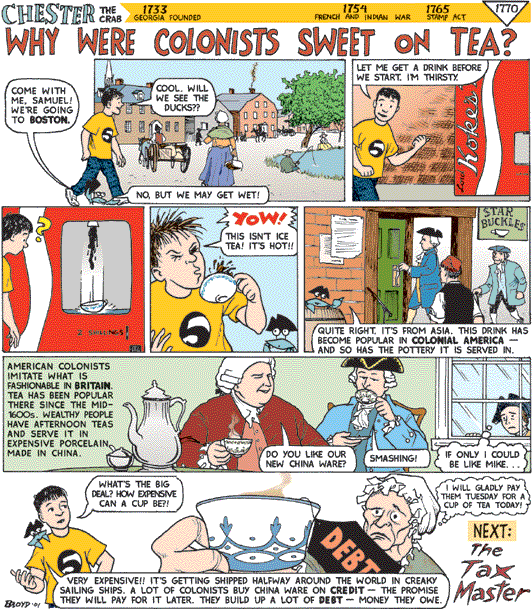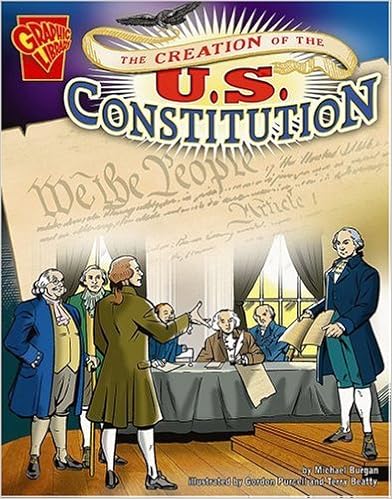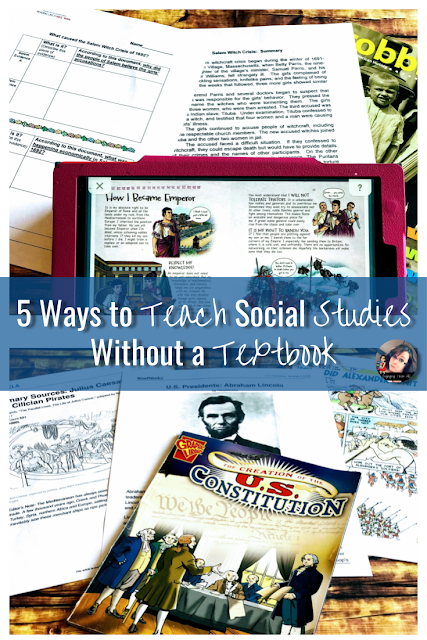As we approach the beginning of the school year, I'm sure many of you are thinking about changes you will make in your classroom and many of you will be entering the classroom for the first time. Congratulations!!!!!!! When I entered the classroom, oh sooooooooo many years ago, I was handed an American history textbook that was 15 years old (the textbook had great hope that Ronald Reagan would be a great president 😜). To accompany that terrible textbook, I was given a teacher version. The only difference between the teacher version and the student version was that it had answers to the three questions at the end of every section. I was okay though. My ed program had prepared me for a world where textbooks were not the end all and be all. Unfortunately, though, for my students I solved this problem by creating overhead transparencies for every topic. My notes were fun, included clipart, and I can tell a story like a sailor so my kids really enjoyed this but..... uh. I lectured the content to them for 180 days. We discussed, annotated, created illustrated notes... but I lectured the content to them for 180 days. I'm sorry kiddos... I tried but I failed.
Fast forward many, many years and I still didn't teach with a textbook. We had them in the class, we used them every now and then as a reference, I use textbooks for sub plans, and for many years we used them to build pyramids in Egypt and to hold up our aqueducts in Rome! So how do I teach my content without textbooks without lecturing my content for 180 days?
1. Walk the Room/Gallery Walk
 |
| My students taking notes on the 5 Themes of Geography. |
2. Primary Sources
I loooooooove to teach with primary sources but was always so intimidated by them because the reading level was often way to high for my students and to really teach them you need to unpack the vocabulary, find its place in context, etc. One of the things I learned early was that my students didn't need to read an entire document. I started to get them to analyze just a couple of sentences or a paragraph and that allowed me to teach how we analyze primary sources. Also, I learned not to shy away from using photos, paintings, and political cartoons in our studies. These can be even more powerful than the written word. Some great resources have come along to really help teachers get students to engage with primary sources on the appropriate age level.My favorite is Read Like A Historian from Stanford University.
Read Like a Historian has primary sources for American and World History. The primary sources are well organized and come with questions that guide students through reading, understanding and analyzing the text.
Two other great resources is DocsTeach from the National Archives....
and the Famous Speech section on Newsela. These are great because you can change the reading level of the famous speech!
3. Cartoons and Graphic Novels
I loooved teaching with cartoons and graphic novels and my students adored it! One of my favorite artists is Bentley Boyd. He creates cartoons based on a ton of history topics, but mostly American History. You can buy books of his work, by topic on Amazon and he offers previews and lesson ideas on his website.

I also love the books through the company called Graphic Library. Here are some on Amazon.

Epic! Books also has some available. Here is a collection I organized for you!
4. The Internet with Accommodation Tools
These days we can find all the information we need online but sometimes it is hard for students. Here is a list of tools that will help you and your students access online content. My two favorites are Print Friendly and SMMRY. In the table, choose "Reading" under "Area of Concern".
5. Outside Readers
There are many great informational text readers that can be added to curriculum. I love using Newsela. They have a U.S. History and World History content area that is to die for! Readworks is also a great place to go for history content based upon reading level. My absolute favorite, which will not come as a surprise, is Epic! Books. Their informational text section is phenomenal and can easily be used to drive content in your classroom!
 I hope that this has been helpful! If you have any questions, feel free to reach out in the comments below and if you would like to add to the conversation please tell us how you are getting rid of textbooks in you classroom. Also, you may want to go to my TPT store and check out some activities that come with the reading or notes so you're entire lesson is all together in one resource! Click her to check some of those out!
I hope that this has been helpful! If you have any questions, feel free to reach out in the comments below and if you would like to add to the conversation please tell us how you are getting rid of textbooks in you classroom. Also, you may want to go to my TPT store and check out some activities that come with the reading or notes so you're entire lesson is all together in one resource! Click her to check some of those out!







No comments